Results 6,921 to 6,930 of 12094
Thread: Anandtech News
-
05-04-17, 12:40 PM #6921
Anandtech: ASUS Maximus IX Extreme Z270 Motherboard Now Available: $629 with Water Bl
First unveiled at CES 2017, and launched by ASUS back in early March, the availability of the flagship Republic of Gamers (ROG) Z270 motherboard has thus far been limited to Newegg in North America. That changes today with the announcement that the Maximus IX Extreme is now widely available at leading resellers in both Canada and the United States.
Built for gaming and liquid cooling enthusiasts, the Maximus IX Extreme represents the pinnacle of ASUS' engineering expertise. ASUS has also collaborated with Bitspower in order to develop the factory-installed monoblock water cooling solution that is clearly the model's most distinguishing feature over other motherboards. The monoblock is so large that it is likely the main factor behind this model's price.
Designed to cool the CPU and the associated power delivery components, this monoblock incorporates flow rate, water leak, and inlet/outlet temperature sensors, all of which can be monitored and controlled from within the UEFI or the Fan Xpert IV utility. There is also ubiquitous RGB LED lighting built-in, which can be controlled by the AURA utility along with the LEDs integrated into the I/O cover, PCH heatsink, and any light strip attached to the 5050 RGB header. Speaking of headers, this motherboard has a lot of them. There are 12 fan headers, which includes 8 radiator fan headers and 2 water pump headers, and a number of additional flow rate and temperature sensor headers. Overall, this should not only negate the need for any additional fan controllers, but also reduce wiring complexity. All of these headers can be fully configured from within the UEFI or Fan Xpert IV utility.
There is also a separate heatsink included to cool the topmost M.2 drive. While it is not part of the monoblock, it does make contact with it and thus should receive some level of passive cooling. Not to be ignored, the secondary M.2 drive can be cooled with the M.2 cover that is integrated into the PCH heatsink. Both of these M.2 connectors support SATA and PCI-E 3.0 x4 NVMe SSDs, as well as Intel Optane Memory, but only the secondary connector supports longer 22110-type drives. The remaining drive storage needs are handled by eight SATA 6Gb/s ports.
In addition, the mainboard supports eight USB 3.0 ports (six rear, one header), four USB 2.0 ports (via two headers), one USB 3.1 type-A port, one USB 3.1 type-C port that supports Thunderbolt 3, and a rare USB 3.1 front-panel connector. Rounding out the connectivity is one gigabit LAN port powered by an Intel I219-V controller, onboard 2x2 802.11ac Wi-Fi with MU-MIMO that is based on Qualcomm Atheros QCA6174A chip, as well as HDMI 1.4 and DisplayPort 1.2 video outputs.
Since this is a high-end gamer-oriented motherboard, it is no surprise to see ROG SupremeFX onboard audio. This 8-channel audio solution is designed around the Realtek ALC1220A codec, but also features a Texas Instruments RC4580 op-amp, ESS ES9023P digital-to-analog converter (DAC) for the front-panel output, shielded audio circuits, impedance sensing for the front and rear headphone outputs, and color-coded and LED-illuminated 3.5mm audio connectors.
Given the pedigree of the Extreme model name, overclockers have not been overlooked either. There is a plethora of ASUS-specific features that are designed with overclocking in mind, such as the ProbeIT voltage read points, Q_Code LED, an LN2 Mode jumper, a Slow Mode Switch, an RSVD switch, a ReTry button, a Safe Boot button, a MemOK! button, a DRAM channel jumper, and the ROG Extension connector. There are also diagnostic LEDs throughout the motherboard.
Last but not least, the board features a standard complement of four DDR4 slots (which support overclocked memory speeds up to DDR4-4133), two strengthened PCIe x16 slots for graphics purposes (PCIe 3.0 x16 or x8/x8), one PCIe 3.0 x4 slot from the chipset, and one full length PCIe slot that operates at PCIe 3.0 x4. These last two slots get their bandwidth from the PCH, and there are SATA limitations that you need to research if you plan to use the mechanical PCIe x4 slot.
As mentioned in the introduction, the ASUS Maximus IX Extreme is now widely available in North America and carries a suggested MSRP of $629 USD. As a result of that price point, it supplants its predecessor, the Maximus VIII Extreme, as the most expensive LGA1151 motherboard on the market.
Buy ASUS Maximus IX Extreme on Amazon.com
Gallery: ASUS Maximus IX Extreme Z270 Motherboard Now Available: $629 with Water Block





Related Reading- The ASUS Maximus VIII Extreme Review: The Other $500 Option
- The ASUS Maximus VIII Impact Z170 ROG Mini-ITX Motherboard Review
- The GIGABYTE Z170X-Gaming G1 Review: Quad-SLI
More...
-
05-04-17, 02:04 PM #6922
Anandtech: AT20 Giveaway Day 7.5: ASUS Motherboards, Video Cards, & Networking Gear
Taking the wheel for our afternoon giveaway in our 20 day giveaway celebration of AnandTech’s 20th anniversary is ASUS. The Taiwanese technology titan has their fingers in a number of different product categories, so it’s only appropriate that they’ve sent us a technology sampler of sorts with products from three of their major categories: video cards, networking gear, and of course, motherboards. All told we have AMD and NVIDIA video cards, AMD and Intel motherboards, a router, and a WiFi adapter to give away this afternoon. So we have a number of prizes to give away to our lucky winners.
- ASUS ROG STRIX Radeon RX 580 Gaming OC Edition (RX-580-O8G)
- ASUS GeForce GTX 1060 OC Edition 6GB 9Gbps (1060-O6G-9)
- ASUS RT-AC1900P Dual-Band Wireless-AC1900 Gigabit Router
- ASUS PCE-AC88 4x4 802.11ac AC3100 PCIe WiFi Adapter
- ASUS Prime X370 motherboard
- ASUS Prime Z270-A motherboard
The AnandTech 20th Anniversary Celebration – Asus Giveaway
ASUS ROG STRIX Radeon RX 580 Gaming OC Edition
Starting things off is ASUS’s ROG STRIX Radeon RX 580 Gaming OC Edition video card. Part of the company’s high-end ROG imprint, the Strix RX 580 is their factory overclocked Radeon RX 580 card, featuring a default 1360MHz clockspeed.
ASUS classifies this as a 2.5 slot card, and between that and the 11.73” length, this is a sizable beast of a card. Putting that space to good use, the card is equipped with a trio of the company’s “wing-blade” fans, which also support zero fan speed idling. Meanwhile as you’d expect for a high-end video card, this is built on a custom ASUS PCB, equipped with a 7+1 phase power delivery system built from ASUS’s Super Alloy Power II components. Rounding out the package is a full RGB lighting system built into the shroud, courtesy of ASUS’s Aura Sync lighting technology.ASUS ROG Strix RX 580 Specifications ASUS ROG Strix
RX 580AMD Radeon RX 580
(Reference)Boost Clock 1360MHz 1340MHz Memory Clock 8Gbps 8Gbps VRAM 8GB 8GB TDP N/A 185W Power Connectors 8pin 8pin Length 11.73" N/A Width 2.5 Slot N/A Cooler Type Open Air N/A
ASUS GeForce GTX 1060 OC Edition
Our second video card from ASUS’s collection is their GeForce GTX 1060 OC Edition. While not a high-end card like the ROG Strix, the GeForce card features its own set of tricks. In particular, this factory overclocked card is one of the first GTX 1060 cards on the market to feature 9Gbps GDDR5 memory, which NVIDIA only recently started offering on factory OC cards. Coupled with that is 100MHz GPU frequency bump, making for a sizable boost over the reference GTX 1060.
ASUS’s GTX 1060 is equipped with their DirectCU II cooler – a dual fan open air cooler – which like its ROG counterpart, also implements their “wing-blade” fans and zero fan speed idling. The card’s PCB is also equipped with ASUS’s Super Alloy Power II components to further set it apart from other cards.ASUS GeForce GTX 1060 OC 9Gbps Specifications ASUS GeForce GTX 1060 OC 9Gbps NVIDIA GeForce GTX 1060 6GB
(Reference)Boost Clock 1809MHz 1709MHz Memory Clock 9Gbps 8Gbps VRAM 6GB 6GB TDP N/A 120W Power Connectors 6pin 6pin Length 8.6" 9.75" Width Double Slot Double Slot Cooler Type Open Air Blower
ASUS RT-AC1900P Dual-Band Wireless-AC1900 Gigabit Router
Third up is one of ASUS’s routers, the RT-AC1900P. This is a dual-band, 3 antenna router supporting 3x3 MIMO on both the 2.4GHz and 5GHz bands. With the addition of support for Broadcom’s proprietary TurboQAM feature, this means the router can hit 600Mbps on 2.4GHz and 1300Mbps on 5GHz.
In terms of wired connectivity, the RT-1900 features a quarter of GigE ports, along with another GigE uplink port. A USB 3.0 port and a USB 2.0 port are provided to take advantage of the router’s significant OS capabilities, including network share hosting, cellular modem connectivity, and network printer hosting. Internally, the router is powered by a dual-core 1.4GHz processor, though ASUS doesn’t specify the exact make.
ASUS PCE-AC88 4x4 802.11ac AC3100 PCIe WiFi Adapter
Meanwhile if you need wireless connectivity on the client side of matters, ASUS has also sent over one of their PCE-AC88 WiFi adapters. This PCIe card based adapter offers 4x4 MIMO streams and the latest-generation MCS-11 (1024-QAM) modulation modes, allowing it to transfer up to 2167Mbps on the 5GHz band. The adapter also uses an external antenna pod with adjustable antennas, to allow for the best antenna positioning.
ASUS Prime X370 Motherboard
Getting to our motherboards, we also have ASUS’s Prime X370 motherboard. The AM4 motherboard sports 3 PCIe x16 slots (2x 3.0, and 1x 2.0), 3 PCIe x1 slots, and a single full-feature M.2 slot. In terms of third party controllers, we’re looking at an ASMedia controller for USB 3.1 (Gen 2) support, a Realtek ALC S1220A for audio, and an Intel I211-AT GigE LAN controller.
And as this is a Prime board, ASUS hasn’t skimped on the features either. The board features ASUS’s “5X” hardware protection, including their reinforced “SafeSlot” PCIe slots. And on the BIOS side the board features their usual high-end BIOS features – including one-click overclocking and CrashFree BIOS 3.
ASUS Prime Z270-A Motherboard
Last but certainly not least, we have ASUS’s Intel motherboard, the Prime Z270-A. This full ATX LGA 1151 board offers 3 PCIe x16 slots and another 4 PCIe x1 slots. The board also features a pair of M.2 slots – one pure PCIe and the other offering both SATA and PCIe. ASUS has also added several third-party controllers to the board, including an ASMedia USB 3.1 (Gen 2) controller, an Intel I219V controller for GigE networking, and a Realtek ALC S1220A for audio.
Otherwise like its AMD counterpart, ASUS has similarly equipped it in terms of features, including the 5X hardware protection and high-end BIOS features. The board also features a dedicated clock generator (which ASUS dubs Pro Clock) for improved overclocking, and the company is even embracing customization via 3D Printing, publishing the blueprints for a few accessories that can be printed for the board.
Finally, as with our other giveaways, this afternoon’s giveaway is only open for 48 hours, so be sure to enter soon. However please note that for legal reasons, we’re only able to open these giveaways to residents of the United States.
Good luck to everyone! And be sure to check in tomorrow for our next giveaway.
More...
-
05-04-17, 03:22 PM #6923
Anandtech: Deepcool Launches Captain EX RGB CPU Coolers with LED Lighting
Deepcool has announced its new lineup of CPU coolers featuring customizable RGB LED lighting. The new Captain EX RGB cooling systems offer the same cooling performance as the already available Captain EX products, but offer a new look that can be controlled by appropriate software shipped with motherboards from different manufacturers.
The Deepcool Captain 120EX RGB and the Deepcool Captain 240EX RGB devices resemble the company’s Captain 120EX/240EX cooling systems with 120- and 240-mm radiators (respectively) as well as one or two 120 mm fans. The products are compatible with all modern processors from AMD (including AM4) and Intel (including LGA2011-v3 and LGA1151). As for performance, both parts are rated for CPUs with TDP of up to 150 W.
The main differences between the Captain EX and the Captain EX RGB coolers are RGB LEDs integrated into waterblocks of the latter as well as a bundled LED strip for the case. The lighting of the Deepcool Captain EX RGB coolers can be controlled using the included wired controller, or the RGB LED-controlling software (such as the ASUS Aura) supplied with appropriate motherboards.Specifications of Deepcool Captain EX-Series Cooling Systems Captain 120EX RGB Captain 240EX RGB Dimensions Waterblock
PumpLength 93 mm Width 92.5 mm Height 85 mm Radiator Length 154 mm 274 mm Width 120 mm Depth 27 mm Fan Length 120 mm 120 mm × 2 Width 120 mm 120 mm × 2 Depth 25 mm Fan Speed (RPM) 500±200-1800±10% Airflow (CFM) 76.52 153.04 Static Pressure (mm-H2O) 3.31 3.31 (?) Noise (dBA) 17.6 ~ 31.3 Power 1.44 W 1.44 W × 2 MTBF (hrs) ?50,000 @ unknown oC Connector 4-pin PWM connector Pump Speed (RPM) 2100±10% Life Expectancy ?120,000 @ unknown oC Power 1.8 W Tubing Length 310 ~ 315 mm Compatibility AMD AM4/AM3+/AM3/AM2+/AM2/FM2+/FM2/FM1 Intel LGA2011-v3/LGA2011/LGA1366/LGA115X TDP 140 ~ 150 W
The addition of the Captain EX RGB coolers into the Deepcool lineup emphasizes the importance of customizable LED lighting for high-end PC hardware for enthusiasts. Nowadays a lot of people demand to have an option to build a computer that looks exactly how they want and customizable RGB lighting is an easy and relatively inexpensive way to do it. In speaking to companies like Corsair, despite the negativity surrounding RGB lighting, it tends to make up a significant portion of sales, especially on high-end products, when both plain versions and RGB versions is available.
The Captain 120EX RGB and the Captain 240EX RGB from Deepcool will be available starting next month for $99.99 and $129.99, respectively.
Related Reading:
- DEEPCOOL Showcase the GamerStorm Quadstellar: One Big Metal Shuriken Chassis
- NZXT Unveils Fully Customizable Aer RGB LED Fans
- G.Skill Announces Trident Z RGB Illumination to DDR4
- Corsair Vengeance RGB DDR4 Memory Modules with LEDs Now on Sale
- The Corsair Gaming K95 RGB Platinum Mechanical Keyboard Review
More...
-
05-05-17, 04:02 AM #6924
Anandtech: NVIDIA Releases 382.05 WHQL Game Ready Driver
We’ve reached a new month, which brings new games that NVIDIA is always happy to prepare for. This week they have released another iteration for release 381 of their GeForce driver. While less feature-packed than some of the recent driver updates, with no new tech being in these updates, there is a slight slant toward SLI and multi-GPU in the round which may please SLI users.
First on the list of fixes, two of those SLI issues. In No Man’s Sky with The Foundation Update 1.10 patch with SLI enabled texture corruption should be fixed, while BSODing in World of Tanks should also be fixed for SLI mode. A BSOD error has also been knocked out on the GTX 1080 Ti for Gears of War 4. Meanwhile it also appears that the NVIDIA Control Panel in the Windows desktop context menu, as well as the NVIDIA system tray icon, may have ran away for some on previous driver releases; those should find their way home with this update. Finally, a new stability fix should make systems less likely to hang on a black screen from a cold boot now, and extended displays in a multi-display configuration should be able to enter sleep mode now.
Meanwhile the 382.05 driver adds game ready driver support Prey, Battlezone, and the new Gears of War 4 multi-GPU update (which I hear is long overdue). Additionally, SLI profiles have been added for Sniper: Ghost Warrior 3 and Warhammer 40,000: Dawn of War III.
Anyone interested can download the updated drivers through GeForce Experience or on the NVIDIA driver download page. More information on this update and further issues can be found in the 382.05 release notes.
More...
-
05-05-17, 04:02 AM #6925
Anandtech: AMD Releases Radeon Software ReLive Crimson Edition 17.5.1: Prey Release D
Only a week out from the release of Radeon Software Crimson ReLive Edition 17.4.4 and AMD is in for another brief round. This release is arguably on the more conservative side, if we can benchmark the release by numbers of bullet points (ed: we shall call it TextMark!). AMD's Radeon Technology Group was certainly busy, because along with a new beta driver they also have bumped last week’s 17.4.4 to a full relase.
For this week's 17.5.1 release, we get Display Driver Version 17.10.2711 (Windows Driver Store Version 22.19.165.3) and a moderate list of fixes starting with an issue that was causing the error message “1603” during install. Radeon Settings should have less trouble updating as well with a fix for the Radeon Software auto update feature. Forza Horizon 3 players should no longer experience minor graphics corruption and Sid Meier’s Civilization VI will no longer crash for players with systems using Hybrid Graphics. Pulling up the end of the list, Radeon WattMan will no longer fail to apply settings on Radeon R9 390 series products and switchable graphics support for Unengine Superposition has been added for XConnect and Hybrid Graphics systems.
The games list is short this time around, with AMD publishing this latest driver large part to offer launch-day driver support for the newly released Prey. Along with the claimed 4.7% increase in performance vs last week’s 17.4.4 driver AMD is also providing a Multi GPU profile for today's launch.
As always, those interested in reading more or installing the updated hotfix drivers for AMD’s desktop, mobile, and integrated GPUs can find them either under the driver update section in Radeon Settings or on AMDs Radeon Software Crimson ReLive Edition download page.
More...
-
05-05-17, 07:18 AM #6926
Anandtech: Toshiba Announces Portégé X30: 13.3” FHD, Core i7, 16 GB DDR4, Thunderbolt
Toshiba this week introduced its new Portégé X30 lineup of notebooks designed for business and enterprise users. Three models will be on offer, powered by Intel’s Kaby Lake-U SoCs and they come equipped with up to 16 GB of memory, up to 512 GB of SSD storage, Thunderbolt 3, WiGig connectivity (optional), harman/kardon speakers, and security features such as an IR camera, a fingerprint reader, and a TPM 2.0 module. The weight of the clamshell is just around 2.3 pounds (or about 1.05 kilograms), among the lowest in the industry.
Now focused primarily on business notebooks rather than laptops for consumers, Toshiba does not make many PC-related announcements these days. Nonetheless, the company continues to develop ultra-portable laptops to compete against rivals. In this space, models such as Lenovo’s ThinkPad X1 or Dell’s XPS 13 reign supreme. So this week, Toshiba launched its new Portégé X30 13.3” notebook that combines high performance, connectivity, and security with a low weight that is among the lowest in the class. To reduce the weight of the notebook to around a kilogram, Toshiba used a magnesium alloy for the chassis. This increased the thickness of the laptop to 15.9 mm, but it looks like Toshiba decided that weight reduction and durability is more important than ultimate portability at any cost.
The Toshiba Portégé X30 is based on Intel’s Core i5/i7 processor with built-in HD Graphics 620 and Microsoft’s Windows 10 Pro operating system. Depending on the version of the PC, the Portégé X30 can be equipped with 8 or 16 GB of DDR4-2133 memory, and a 256 GB or a 512 GB PCIe SSD. When it comes to connectivity, the new notebook is equipped with an 802.11ac Wi-Fi + BT 4.1 wireless module, optional WiGig (select built-to-order models only), one HDMI output, a microSD card reader, two Thunderbolt 3 ports that can work in DisplayPort 1.2 and USB 3.1 Gen 2 modes, and one USB Type-A header.
For security features, the Portégé X30 is equipped with SecurePad with Synaptics Natural ID fingerprint sensor, a webcam with IR sensors (for facial recognition) as well as a Trusted Platform Module (TPM 2.0). For added comfort, the notebook comes with a backlit, spill-resistant keyboard with a trackpoint nub. As for multimedia capabilities, the system has a stereo sub-system featuring speakers co-designed with Harman Kardon that also carry a DTS label.Toshiba Portege X30 Portege X30-D1352 Portege X30-D1354 Portege X30-D1356 Display 13.3" 1920×1080 with 10-point multitouch CPU Core i5-7300U
2C/4T
3MB L3 Cache
2.6-3.5 GHzCore i7-7600U
2C/4T
4MB L3 Cache
2.8-3.9 GHzGraphics HD Graphics 620 (24 EUs) RAM 8 GB DDR4-2133 16 GB DDR4-2133 Storage 256 GB M.2 PCIe SSD 512 GB M.2 PCIe SSD Wi-Fi IntelDual Band Wireless-AC 8265 2×2 802.11ac Wi-Fi Bluetooth Bluetooth 4.2 USB 3.0 1 × Type-ATB3 2 × Type-C TB3/USB 3.1 ports (also used for charging, external display, etc.)Card Reader MicroSD Fingerprint Sensor Yes Other I/O Webcam with RGB + IR sensors, microphone, stereo speakers, audio jack Battery 48 Wh Thickness 15.9 mm (0.62 inches) Weight Starting at 1.05 kg (2.31 lbs) Price $1450 $1600 $1900
Toshiba’s Portégé X30 laptops are available directly from the company in the U.S. for $1450, $1600 or $1900, depending on configurations. Toshiba sells its Portégé notebooks in other regions as well, albeit in different configs (e.g., machines with a 1366×768 resolution and lower-end CPUs) and at different price points.
Related Reading:
- Toshiba Details Its PC Business Reorg: Set to Concentrate on Tecra and Portégé Brands for Business Users
- ASUS ZenBook 3 Deluxe UX490UA: Kaby Lake, 16 GB RAM, 1 TB SSD, TB3, 14" FHD, 2.4 lbs
- HP Introduces HP ENVY 13 Laptops with Kaby Lake, USB-C, New Battery, $849
- Samsung Updates Notebook 9: Kaby Lake, USB-C, Starts at 816 Grams
More...
-
05-05-17, 09:38 AM #6927
Anandtech: Samsung and TSMC Roadmaps: 8 and 6 nm Added, Looking at 22ULP and 12FFC
Samsung and TSMC have made several important announcements about the present and future of their semiconductor manufacturing technologies in March. Samsung revealed that it had shipped over 70 thousand wafers processed using its first-generation 10 nm FinFET fabrication process (10LPE) and also announced major additions to its upcoming manufacturing technology roadmap. In particular, the company plans to introduce three processes it has not talked about thus far. TSMC said that it is about to start mass production of ICs (integrated circuits) using its first-gen 10 nm technology and also announced several new processes that will be launched in the coming years, including its first 7 nm EUV process due in 2019.
More...
-
05-05-17, 09:38 AM #6928
Anandtech: AT20 Giveaway Day 8: OnePlus Adds In Some 3T Phones
Friday is my favorite day. Why? Because that means it’s day 8 of our 20 day giveaway celebration of AnandTech’s 20th anniversary, which means it’s time for two more lucky readers to win prizes.
Taking us into the weekend is OnePlus, who will be helping everyone stay connected. For their part of the At20 giveaway the unconventional smartphone manufacturer has sent over not just one, but two of their flagship 128GB OnePlus 3T Android smartphones.
- OnePlus 3T (#1)
- OnePlus 3T (#2)
The AnandTech 20th Anniversary Celebration – OnePlus Giveaway
OnePlus 3T
Released back in November of 2016 as a step-update of sorts for the original OnePlus 3, the OnePlus 3T is a 5.5-inch Qualcomm Snapdragon 821 based Android smartphone. OnePlus’s place in the market is an interesting one as the company has established itself as a reliable vendor of affordable high-end smartphones, and the OnePlus 3T follows in this trend. Paired up with the SD821 is 6GB of LPDDR4 memory, and for storage we’ve been sent the larger capacity model with 128GB of UFS 2.0 NAND.
On the visual side of matters, the OnePlus 3T comes with a 5.5-inch 1080p PenTile AMOLED display, which in proper sRGB mode we’ve found to have great color accuracy and reproduction. Meanwhile capturing the visual world is a 16MP camera with OIS, backed by Sony’s IMX298 sensor. Powering the whole phone is a larger-than-average 3400mAh battery, which gives the phone a bit of an extra kick in battery life. Rounding out the 3T, the phone’s body is built from a single piece of aluminum with a tapered back, giving the phone a seamless design. On which note in our review of the phone last year, Brandon Chester called out the design of the 3T as one of his favorite parts of the phone, noting he especially liked the phone’s design and button placement.OnePlus 3T Specs SoC Qualcomm Snapdragon 821
2 x 2.35GHz Kryo
2 x 1.6GHz Kryo
653MHz Adreno 530RAM 6GB LPDDR4 Display 5.5" 1920 x 1080 PenTile AMOLED Size / Mass 152.7 x 74.7 x 7.35mm, 158g Battery 3400 mAh Rear Camera 16MP 1.1 μm Sony IMX298, f/2.0, OIS Front Camera 16MP 1.0 µm
Samsung S5K3P8, f/2.0Storage 64/128GB UFS 2.0 I/O USB 2.0 Type-C connector, 3.5mm audio Connectivity 1x1 802.11a/b/g/n/ac + BT 4.2, USB-C, GPS/GNSS Launch Software Android 6.0.1
OxygenOS 3.5.1
Finally, as with our other giveaways, this afternoon’s giveaway is only open for 48 hours, so be sure to enter soon. However please note that for legal reasons, we’re only able to open these giveaways to residents of the United States.
Good luck to everyone! And be sure to check in Monday for our next giveaway.
More...
-
05-05-17, 10:11 AM #6929
Anandtech: ECS Quietly Adds PB01CF Ultra Compact PC to Lineup: a 5 Oz Apollo Lake Des
ECS has quietly added a new small x86 desktop computer into its lineup. The ECS PB01CF ultra-compact PC is powered by Intel’s Apollo Lake platform and uses an enclosure the size smaller than most wallets. The computer is clearly not a powerhouse, but it supports all the multimedia capabilities that Intel’s latest low-power chips have to offer.
The ECS PB01CF is based on Intel’s Celeron N3350 processor, a mobile SoC with two Goldmont cores clocked at 1.1-2.4 GHz, 2 MB cache and Intel’s HD Graphics 500 (Gen9) iGPU with 12 EUs. The SoC supports Intel's new multimedia playback engine that supports hardware-accelerated playback of 4K video from HEVC and VP9-based sources. The system comes equipped with 2 GB of LPDDR4 memory, 32 GB eMMC storage (not a lot, if you want to store UHD videos locally without using an external hard drive, but enough for streaming) and runs Windows 10 Home. As for connectivity, everything looks fairly standard here: a 802.11ac Wi-Fi module, a GbE controller, a microSD card reader, two USB Type-A headers, and one 4Kp30-capable HDMI output to connect to displays or TVs (note that the system does not have any analog connectors for monitors or audio). The PB01CF measures 7×7×3.1 cm and is powered by an external 24 W adapter.
From a performance and connectivity point of view, the ECS PB01CF is somewhat behind the company’s LIVA Z computers, which are positioned as universal systems for office and media-centric applications. By contrast, the PB01CF is considerably smaller while offering 4K hardware-accelerate video playback, which makes it a viable solution for content streaming or digital signage. In fact, the latter is one the primary applications that ECS positions the PB01CF for, apart from being a cheap office PC attached to the backside of the display, of course. Meanwhile, when compared to Compute Stick systems, the PB01CF has more USB ports, a card reader, GbE and active cooling.Brief Specifications of ECS 5-Ounce PC PB01CF CPU Celeron N3350
2C/2T at 1.1 – 2.4 GHz frequency, 2 MB cache, iGPUPCH integrated Graphics Intel HD Graphics 500 (12 EUs) Gen9 Memory 2 GB LPDDR4 Storage 32 GB eMMC Wi-Fi Intel 802.11ac Ethernet Gigabit Ethernet with RJ45 connector Display Outputs 1 × HDMI (up to 4Kp30) Audio via HDMI USB 1 × USB 3.0 Type-A (5 Gbps)
1 × USB 2.0 Type-A (480 Mbps)Dimensions 70 mm × 70 mm × 31 mm (0.15 liters, 5 ounces) PSU External 24 W VESA Mounts 75 mm/100 mm OS Microsoft Windows 10 Home 64-bit
ECS has not publicly announced pricing of the PB01CF and large retailers as well as price search engines do not list the product in their databases. Moreover, at press time ECS’ web site did not host any manuals or BIOS updates for the PB01CF, which may indicate that the manufacturer has not launched the device yet. Given the fact that the PB01CF does not seem to be designed for general public, it is possible that the PC is only going to be available via special channels with ECS as an OEM - a common avenue for ECS' business.
Related Reading:
- ECS LIVA Z Fanless Dual-LAN Apollo Lake UCFF PC Review
- ECS Expands LIVA mini-PC Family with Z-Series at CES 2017
- ECS Preps LIVA Z: Apollo Lake-Based Nettop with 4K and USB-C Support
Gallery: ECS Quietly Adds PB01CF UCPC to Lineup: 5-Ounce Apollo Lake Desktop

More...
-
05-06-17, 09:26 AM #6930
Anandtech: Corsair Launches Glaive RGB Mouse: 16,000 DPI, Interchangeable Grips, LEDs
Corsair this week released its latest flagship gaming mouse, the new Glaive RGB. The company's latest right-handed mouse incorporates a new sensor, interchangeable grips, programmable RGB lighting as well as on-board storage for profiles. And, as you'd expect for such a mouse, Corsair is aiming solidly at the high-end market, going after gamers looking for a high-end wired mouse.
With the rise of PC gaming in the recent years, multiple companies have entered the market of gaming peripherals with mice, keyboards, headsets and other gear. As a result, the choice of gaming hardware in general and mice in particular became a complicated task as various devices feature different ergonomics and performance. With its new flagship Glaive RGB mouse, Corsair decided to somewhat simplify the choice: the Glaive RGB uses a rather advanced and sensitive IR sensor, and pairs that up with three interchangeable magnetic grips. The smooth, the rubberized and the wide thumb rest grips were designed to allow the mouse to be used with different types of hands and usage models, enabling the Glaive RGB to compete against various rivals with diverse shapes. To customize the look of the mouse further, Corsair equipped it with three RGB LEDs that can be programmed using the company’s proprietary software.
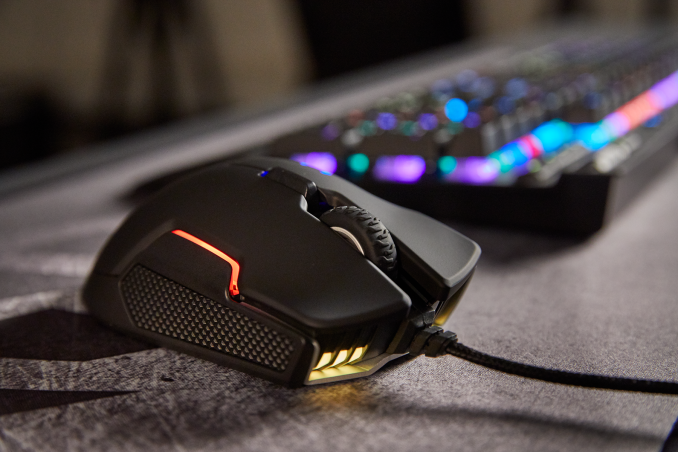
The Corsair Glaive RGB is based on a custom version of Pixart’s PMW3367 gaming sensor with adjustable sensitivity and up to a 16,000 DPI resolution (acceleration supported at that DPI is unknown). The microcontroller of the sensor supports USB report rate of up to 1000 Hz (programmable and requires support from the OS) and the mouse comes with a braided fiber cable. Just like any other high-end mouse for gamers, the Glaive RGB has programmable buttons that can be completely remapped using Corsair’s CUE software, and then used on different computers as button configuration is stored inside the mouse. Besides, the onboard storage is used to store DPI, macros and RGB LED settings.
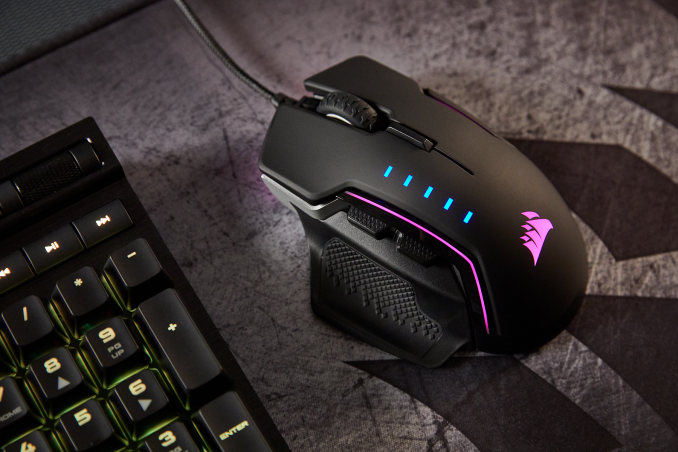
As for the build, the Glaive RGB mouse features metallic skeleton and is made of rubberized plastic. Depending on the version of the mouse, parts of the metallic skeleton that go outside the body are either painted or not.
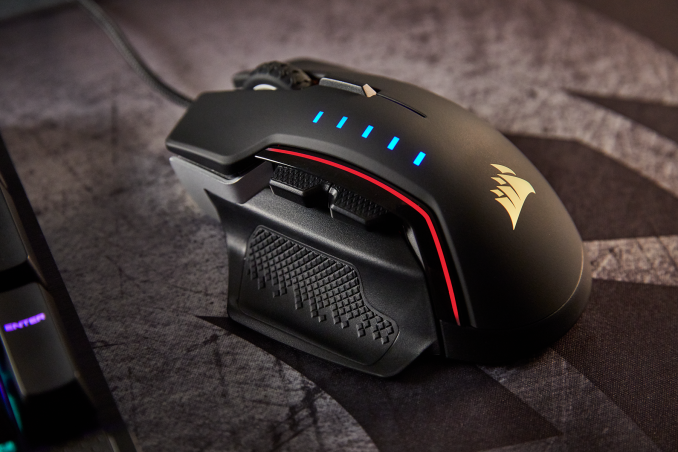
Corsair’s Glaive RGB mouse is now available directly from the company as well as its resellers worldwide. In the U.S., the Glave RGB costs $69.99, whereas in Europe gamers will have to pay €79.99.
Gallery: Corsair Glaive RGB





Related Reading:
- Corsair Vengeance RGB DDR4 Memory Modules with LEDs Now on Sale
- CORSAIR ONE Gaming PC Released
- The Corsair Gaming K95 RGB Platinum Mechanical Keyboard Review
- Corsair’s Bulldog 2.0 Gets Kaby Lake-Compatible Z270 Motherboard, New Cooler
- Razer Announces The Lancehead Gaming Mice
- Logitech Launches G203 Prodigy Gaming Mouse with A New 6000 DPI Sensor
- Razer Updates The DeathAdder Elite Gaming Mouse
- Logitech Announces The Ambidextrous G900 Chaos Spectrum Gaming Mouse
More...
Thread Information
Users Browsing this Thread
There are currently 15 users browsing this thread. (0 members and 15 guests)




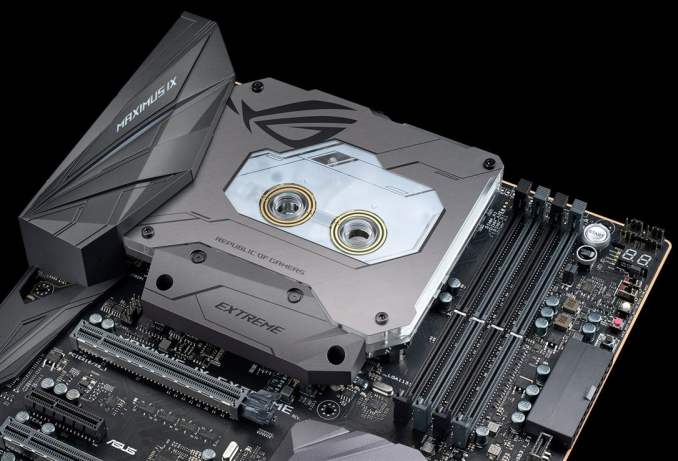
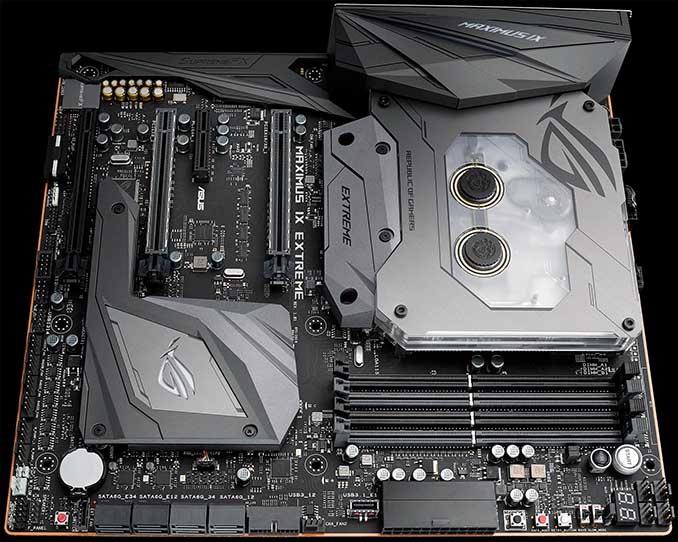
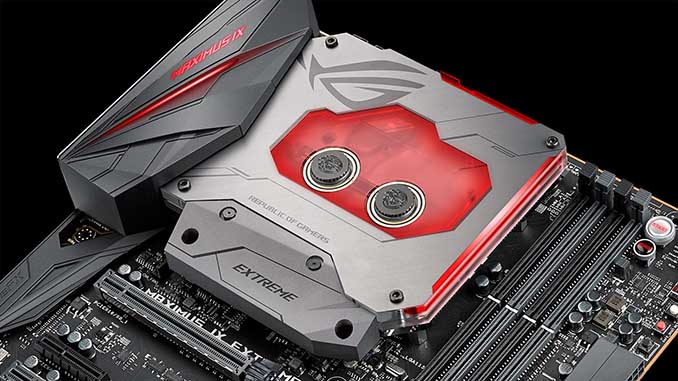
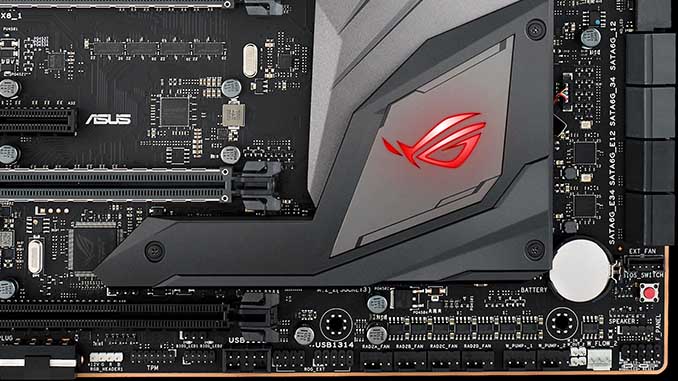
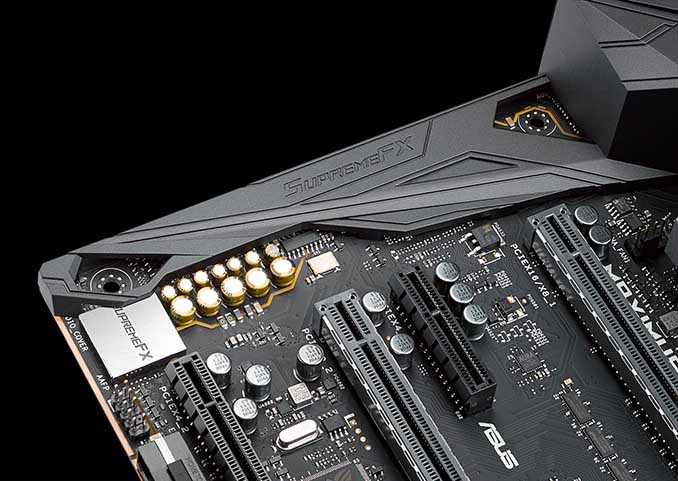

 Quote
Quote
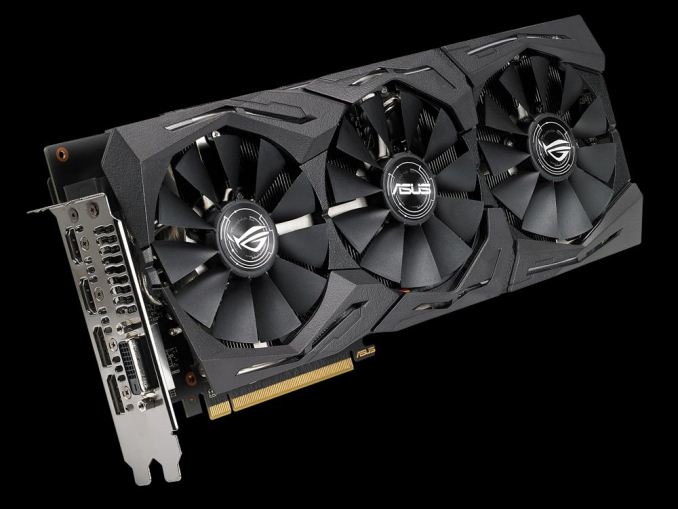












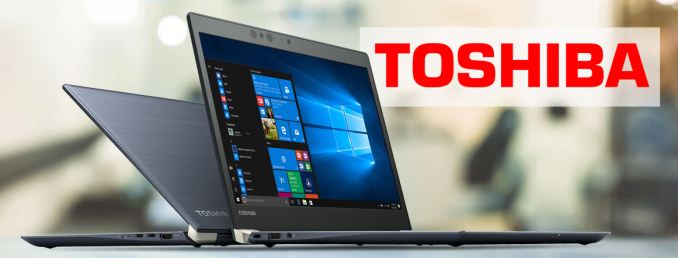
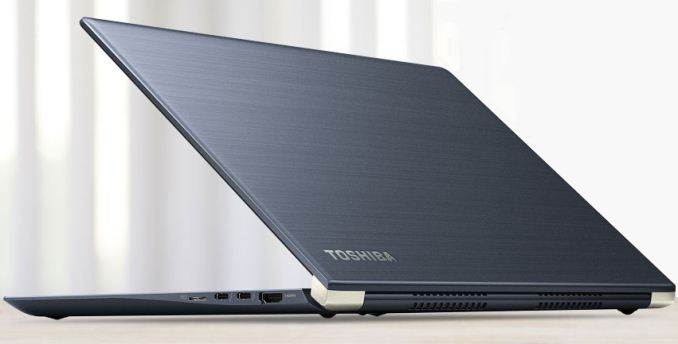
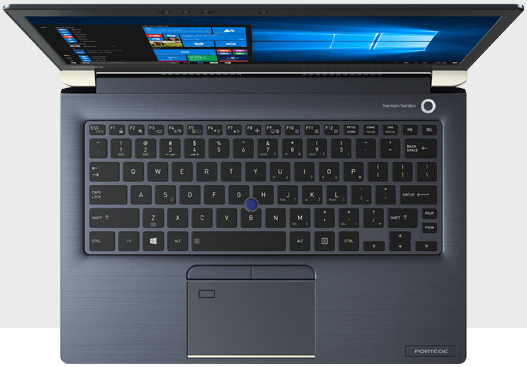


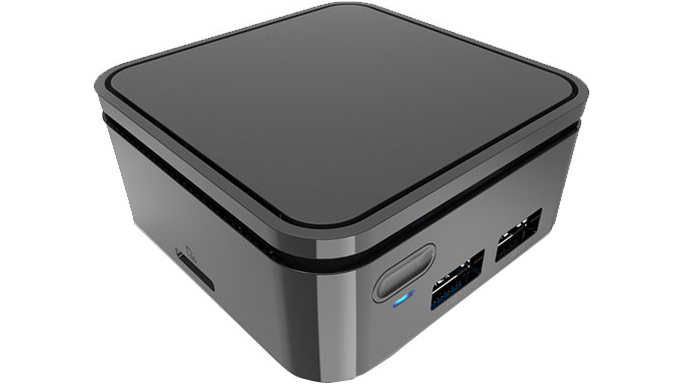
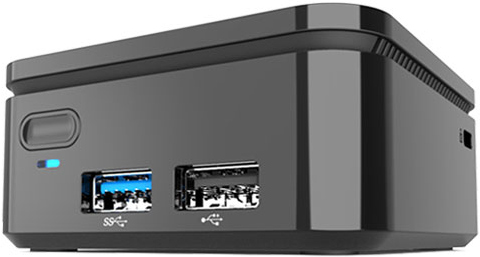


















Bookmarks